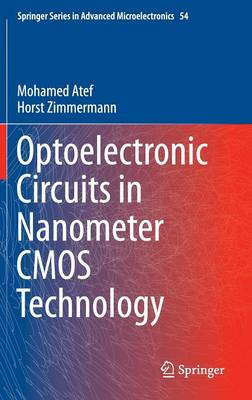Springer Series in Advanced Microelectronics
4 primary works
Book 13
Explains the circuit design of silicon optoelectronic integrated circuits (OEICs), which are central to advances in wireless and wired telecommunications. The essential features of optical absorption are summarized, as is the device physics of photodetectors and their integration in modern bipolar, CMOS, and BiCMOS technologies. This information provides the basis for understanding the underlying mechanisms of the OEICs described in the main part of the book. In order to cover the topic comprehensively, Silicon Optoelectronic Integrated Circuits presents detailed descriptions of many OEICs for a wide variety of applications from various optical sensors, smart sensors, 3D-cameras, and optical storage systems (DVD) to fiber receivers in deep-sub-m CMOS. Numerous detailed illustrations help to elucidate the material.
Book 45
Analog Filters in Nanometer CMOS
by Heimo Uhrmann, Robert Kolm, and Horst Zimmermann
Book 50
Comparators in Nanometer CMOS Technology
by Bernhard Goll and Horst Zimmermann
Book 54
Optoelectronic Circuits in Nanometer CMOS Technology
by Mohamed Atef and Horst Zimmermann
This book describes the newest implementations of integrated photodiodes fabricated in nanometer standard CMOS technologies. It also includes the required fundamentals, the state-of-the-art, and the design of high-performance laser drivers, transimpedance amplifiers, equalizers, and limiting amplifiers fabricated in nanometer CMOS technologies. This book shows the newest results for the performance of integrated optical receivers, laser drivers, modulator drivers and optical sensors in nanometer standard CMOS technologies. Nanometer CMOS technologies rapidly advanced, enabling the implementation of integrated optical receivers for high data rates of several Giga-bits per second and of high-pixel count optical imagers and sensors. In particular, low cost silicon CMOS optoelectronic integrated circuits became very attractive because they can be extensively applied to short-distance optical communications, such as local area network, chip-to-chip and board-to-board interconnects as well as to imaging and medical sensors.



